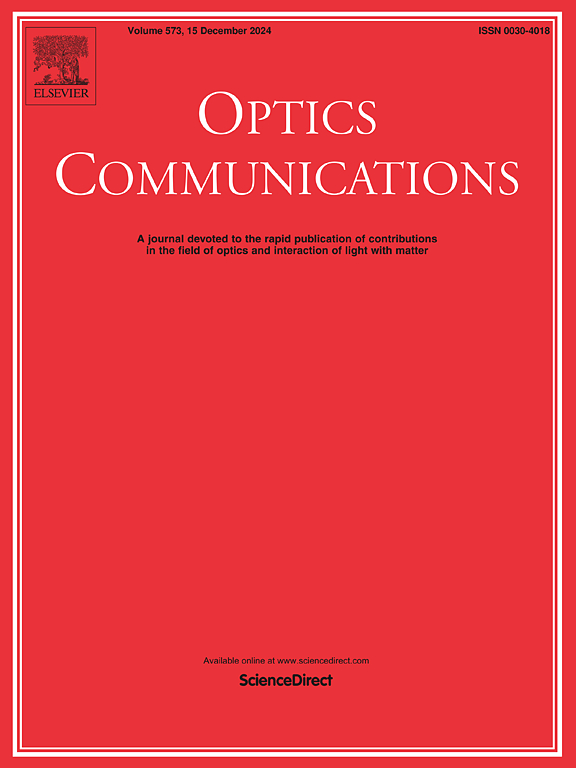反常色散光纤激光器中反向饱和吸收耗散孤子共振的产生
IF 2.5
3区 物理与天体物理
Q2 OPTICS
引用次数: 0
摘要
在这项工作中,我们实验研究了在反常色散状态下,由反向饱和吸收(RSA)效应产生的耗散孤子共振(DSR)脉冲。RSA效应是通过调整单壁碳纳米管-聚乙烯醇复合膜的可饱和吸收特性来实现的。我们的研究结果表明,在高增益腔中,强RSA效应可以抑制谱展宽并防止脉冲破裂,从而促进DSR脉冲的形成。在1560.3 nm的中心波长处,我们获得了持续时间为0.74 ns至3.4 ns的矩形脉冲,单脉冲能量为0.139 nJ。此外,我们的结果表明,DSR脉冲的峰值功率随着饱和功率的增加而增加,这与正常色散状态下的观测结果一致。该研究强调了RSA效应在碳纳米管薄膜中产生DSR脉冲的关键作用,为高性能碳基光纤激光器的发展提供了有价值的见解。本文章由计算机程序翻译,如有差异,请以英文原文为准。
Generation of dissipative soliton resonance with reverse saturable absorption in anomalous-dispersion fiber lasers
In this work, we experimentally investigate the generation of dissipative soliton resonance (DSR) pulses in the anomalous dispersion regime, enabled by the reverse saturable absorption (RSA) effect. The RSA effect is achieved by tailoring the saturable absorption characteristics of a single-walled carbon nanotube-polyvinyl alcohol composite film. Our findings indicate that a strong RSA effect can suppress spectral broadening and prevent pulse breakup in a high-gain cavity, facilitating the formation of DSR pulses. At a central wavelength of 1560.3 nm, we obtain rectangular pulses with durations ranging from 0.74 ns to 3.4 ns, achieving a single-pulse energy of 0.139 nJ. Additionally, our results show that the peak power of DSR pulses increases with the saturation power, consistent with observations in the normal dispersion regime. This study highlights the crucial role of the RSA effect in carbon nanotube films for generating DSR pulses, offering valuable insights for the development of high-performance carbon-based fiber lasers.
求助全文
通过发布文献求助,成功后即可免费获取论文全文。
去求助
来源期刊

Optics Communications
物理-光学
CiteScore
5.10
自引率
8.30%
发文量
681
审稿时长
38 days
期刊介绍:
Optics Communications invites original and timely contributions containing new results in various fields of optics and photonics. The journal considers theoretical and experimental research in areas ranging from the fundamental properties of light to technological applications. Topics covered include classical and quantum optics, optical physics and light-matter interactions, lasers, imaging, guided-wave optics and optical information processing. Manuscripts should offer clear evidence of novelty and significance. Papers concentrating on mathematical and computational issues, with limited connection to optics, are not suitable for publication in the Journal. Similarly, small technical advances, or papers concerned only with engineering applications or issues of materials science fall outside the journal scope.
 求助内容:
求助内容: 应助结果提醒方式:
应助结果提醒方式:


